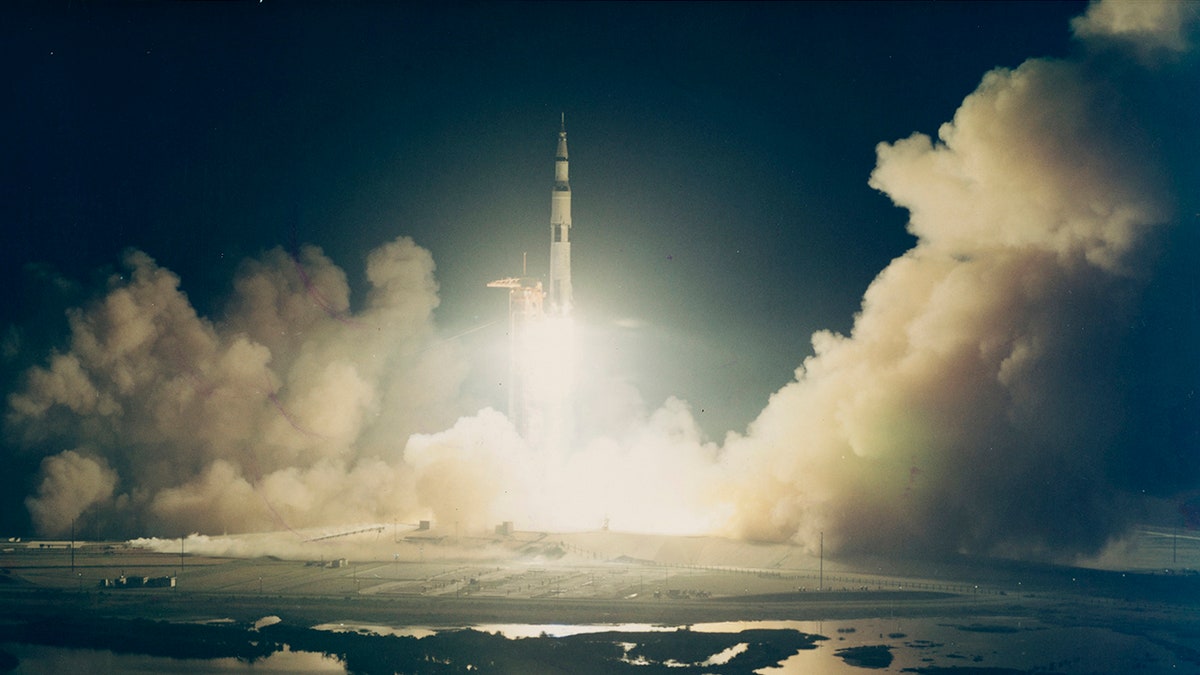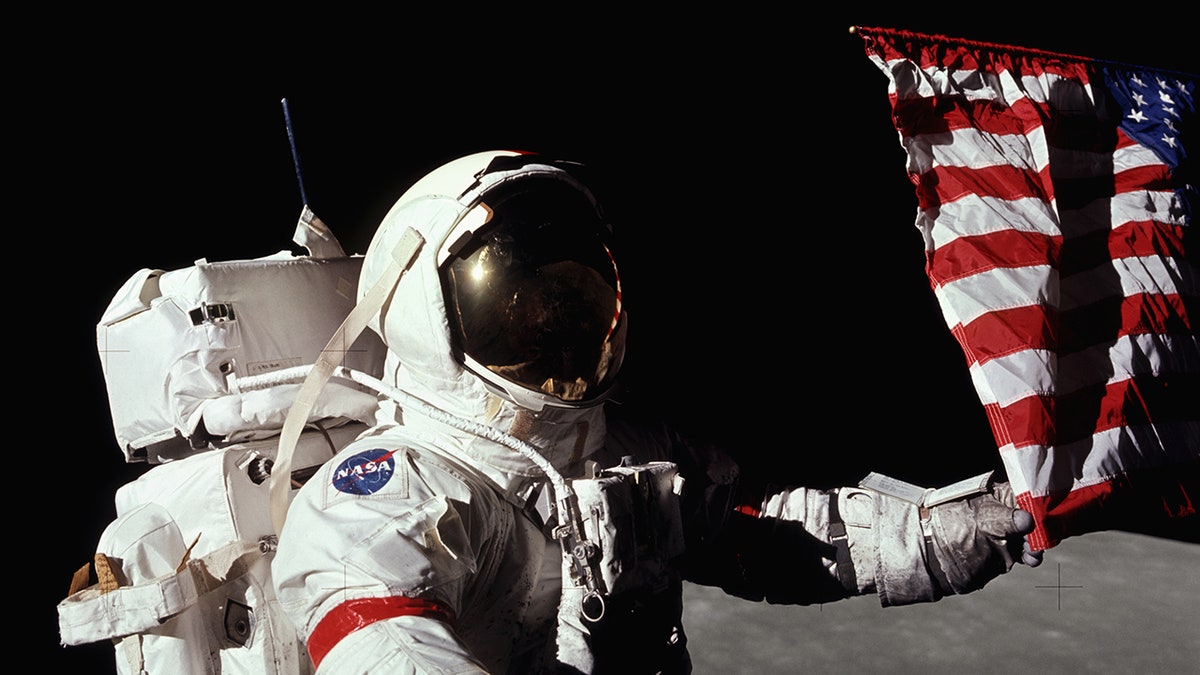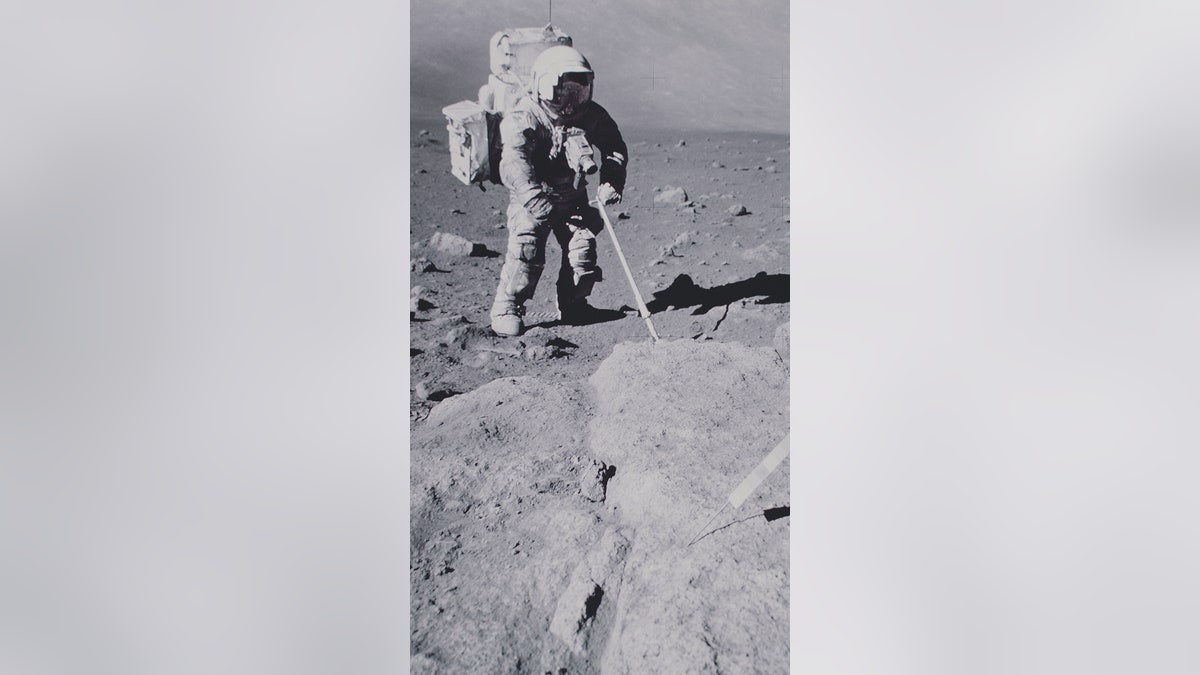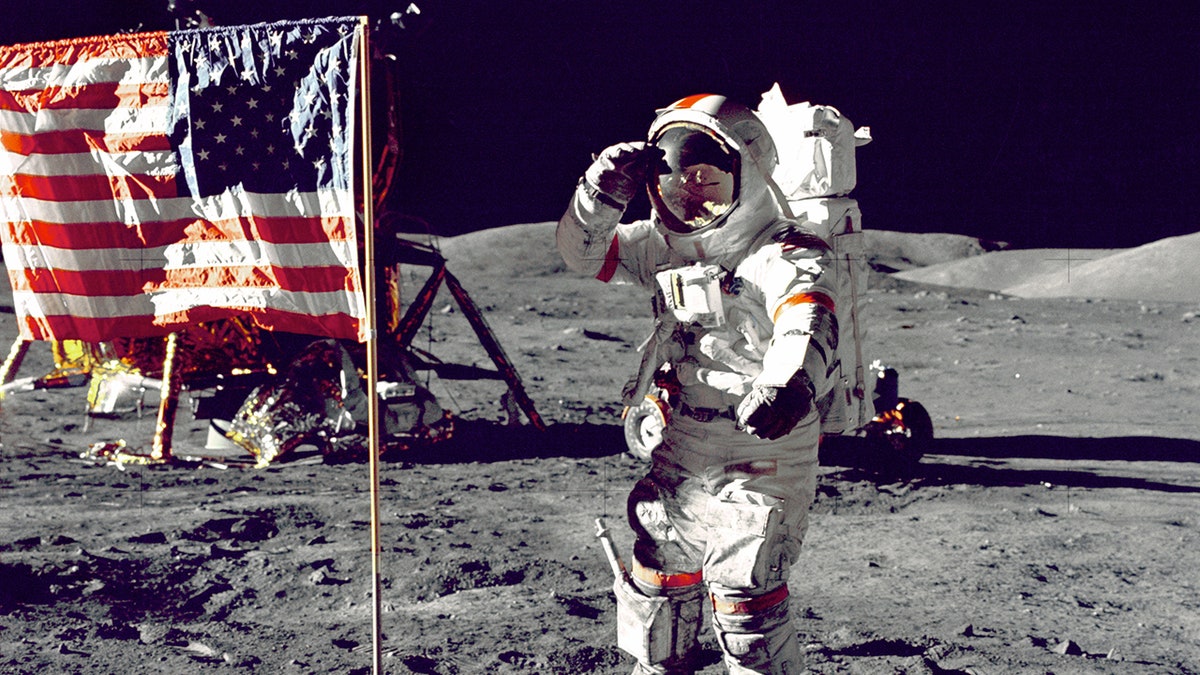Former Apollo 17 Astronaut Harrison Schmitt on privatization of space exploration
Harrison Schmitt, second to last man to walk on the moon, joins Neil Cavuto on 'Your World.'
The U.S.-crewed spaceflight to the moon on Dec. 7, 1972, was known as Apollo 17 — also known as the final flight of the Apollo program.
This particular spaceflight included two historic astronauts: Eugene Cernan and Harrison Schmitt.
These Apollo 17 astronauts would become — on this day in history, Dec. 11, 1972 — the last humans to walk on the moon thus far.
Eugene Cernan was a mission commander who orbited Earth on Gemini 9 and the moon on Apollo 10, according to Britannica.
Harrison Schmitt was a lunar module pilot and the first scientist-astronaut to set foot on the moon.

The launch of NASA's Apollo 17 spacecraft from Pad A, Launch Complex 39 of the Kennedy Space Center in Florida, 7th December 1972. (Space Frontiers/Getty Images)
The spaceflight had a third astronaut on board: Ronald Evans — the command module pilot who had been a naval aviator in the past.
The last of the Apollo program spaceflight launch was originally scheduled for Dec. 6, 1972, in the evening; but it was delayed due to a technical malfunction, according to Britannica.
By Dec. 11, Cernan and Schmitt landed the lunar module on the surface of the moon.
The delay caused the launch to fall just past midnight, making it a Dec. 7 launch from the Kennedy Space Center in Florida.
The powerful rocket made it to Earth’s orbit in less than 12 minutes and the lunar orbit by Dec. 10.
By Dec. 11, Cernan and Schmitt landed the lunar module on the surface of the moon.

Apollo 17 astronaut Gene Cernan touches an American flag on the surface of the moon. (Corbis/Corbis via Getty Images)
"The Challenger" landed just 2 hours and 34 minutes after separating from the command and service module, according to Britannica.
Soon after landing, Cernan and Schmitt stepped onto the moon.
ON THIS DAY IN HISTORY, AUGUST 31, 1966, HARRIER JUMP JET MAKES FIRST FLIGHT
During the 75 hours they spent on the moon's surface, Cernan and Schmitt collected 243.56 pounds of rock and soil samples.
After collecting the samples, the astronauts performed experiments — and began an "experimental package" that sent data back to Earth, according to Britannica.

Lunar module pilot Harrison H. Schmitt collects geological samples on the moon during his EVA (extra-vehicular activity) on NASA's Apollo 17 lunar landing mission in 1972. (Space Frontiers/Getty Images)
On Dec. 14, the two men made it back onto the command module and headed back to Earth.
Just five days later, on Dec. 19, 2972, the group of astronauts landed in the South Pacific Ocean, according to Britannica.
Since then, no American has stepped on the moon again.
CLICK HERE TO SIGN UP FOR OUR LIFESTYLE NEWSLETTER
Schmitt told Space.com in a 2017 interview that the success of the Apollo program could be attributed to many different elements.

Eugene A. Cernan, commander, Apollo 17, salutes the U.S. flag on the lunar surface during extra-vehicular activity (EVA) on NASA's final lunar landing mission. (Heritage Images via Getty Images)
"The keys to the success of the Apollo program included the existence of several elements — specifically, a sufficient base of technology, as well as a large reservoir of patriotic young engineers and skilled workers," he said.
It is thought that Cernan said these words during his last steps on the moon: "We shall return, with peace and hope for all mankind. Godspeed the crew of Apollo 17."
Cernan passed away in January 2017 in Houston.
CLICK HERE TO GET THE FOX NEWS APP
Schmitt — after his work with NASA — went on to become a U.S. senator from New Mexico, serving from Jan. 3, 1977 to Jan. 3, 1983.
A geologist, he remains today the only person without a background in military aviation to have walked on the moon.
For more Lifestyle articles, visit noticias.foxnews.com/lifestyle.





















